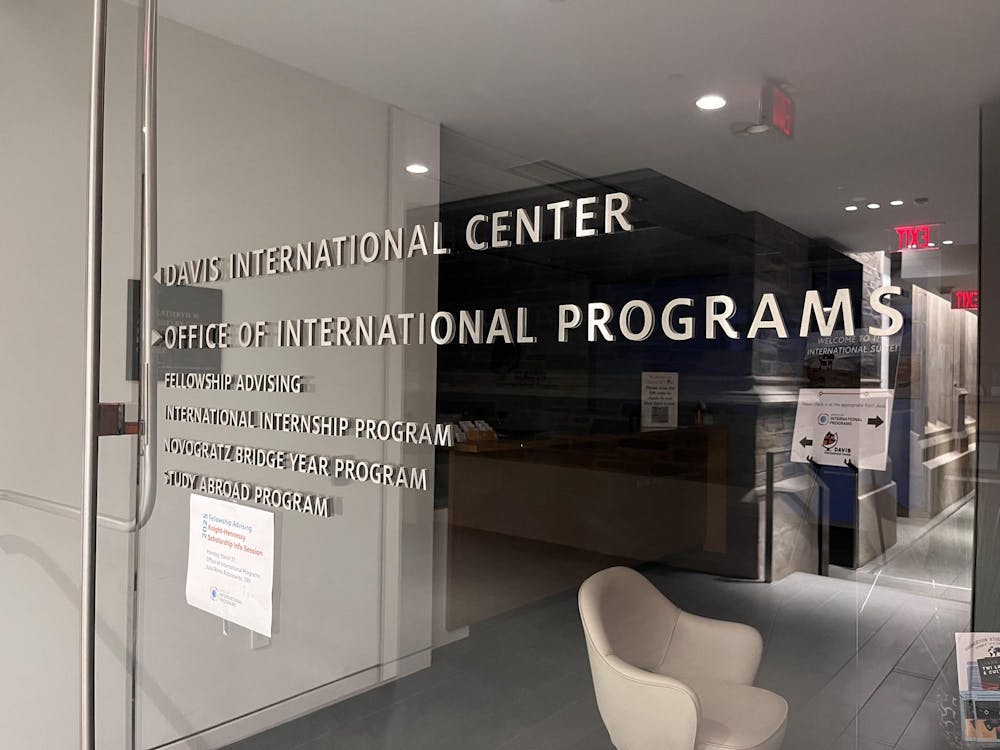When David Stainback '01 awoke, his mouth was parched, but there was nothing to drink beside him. Stainback had been admitted to a busy McCosh Health Center inpatient clinic earlier in the morning with flu-like symptoms and a 102-degree fever and was drifting in and out of consciousness.
In the early afternoon, Stainback received a phone call from a friend, only to pass out from dehydration sitting in the hallway phone booth. Upon awakening and stumbling back to his room, the then-freshman fell to the floor and broke his nose in front of the nurses' station.
What began as a simple sickness quickly turned into a much more serious scenario, leading to surgery and further medical complications.
In retrospect, Stainback attributes the incident to a shortage of staff in McCosh's inpatient ward. "If they had been there with something to drink in the first place, none of this would have happened," he said.
Similar tales of McCosh incidents invariably lead to one prognosis: the limited or misallocated resources within the health center. And with the upcoming 500-student increase, the difficulty of obtaining University funding and the prevalence of a negative stigma about McCosh, the health center could face an uphill battle.
According to members of the Student Health Advisory Board, student feedback consistently calls for longer clinic hours and more staff, specifically in the athletic medicine and Sexuality Education Counseling Health services.
"A lot of these concerns, I think, underlie a greater problem in the lack of resources," SHAB co-president Seenu Susarla '01 said. "There are times when stress is put on the resources, and it is in those situations that you begin to see the cracks."
Many administrators and students say they agree that the trustees' recent decision to increase the size of the student body will only exacerbate McCosh's current problems.

"If you are going to increase the student body size, there has to be a proposed increased in funding, otherwise the quality of care will go down," Susarla noted.
Providing services for 500 additional students will likely put pressure on all aspects of health services, from outpatient care to counseling, according to Director of Health Services Dr. Pamela Bowen. Yet, the pinch will be most apparent in those areas that are already feeling a strain on their resources.
"The most important long-term goal is an increase in the size of the health center," Susarla explained. "Often you hear about a need for new beds, and I think common sense would tell you that McCosh is not really a large building. Whether you need a new building or to add a wing, I don't know, but an increase would require a change of the infrastructure and in how McCosh is laid out."
McCosh's director of administrative services Elizabeth Langan expressed concern that the University may fall short of meeting the health center's growing needs.

Because many of the most popular services in McCosh — such as gynecological examinations and meetings with trainers — often involve hour-long appointments, the burden of more students will have a "big effect," she explained. With the health center's annual average of 2.5 visits per student, the increase in the size of the student body will substantially raise the number of overall student visits, she added.
"I feel like we have some catching up to do, in terms of how to best work with our resources," Langan said.
The short time period during which the student body growth will be implemented will produce additional stress on health services, according to Bowen. "Medical care can't always wait, whereas some educational programs can be worked on over time," she said, referring again to McCosh's probable need for funding.
Despite this perceived urgency, receiving increased funding will not necessarily be easy or guaranteed.
The Priorities Committee, which allocates the University's financial resources, hears competing requests for funds from all sides of the campus each year. And as part of a campus-wide administrative review, McCosh is currently under the University microscope to determine whether it uses resources efficiently.
"Questions of resources are definitely on the table," Vice President for Finance and Administration Richard Spies GS '72 said yesterday. "But it is too early to say where that is going to come out."
Even increased funding, however, may not solve all of McCosh's problems. Specifically, the stigma attached to the health center among undergraduates may prove difficult to erase.
According to the most recent SHAB evaluation, 93 percent of students are "satisfied" or "very satisfied" with service they have received in McCosh. And when students are asked to give their impression of campus health services, McCosh generally scores an eight of 10, according to former SHAB president Karen Joynt '00. But when students are asked to evaluate what they perceive as the campus' level of satisfaction with McCosh, the average rating is six.
"It's really interesting because if you add up all the eights, you don't get a six," Joynt said, blaming the low impression of health services on the "magnified stories" of poor care that circulate among students.
"I think the negative perception of McCosh is by word of mouth and mythology," said Jonathan Wong '02, co-president of SHAB.
On her end, Bowen said students' desire for immediate diagnoses often leaves them disappointed with the center's services. When campus physicians are unable to name an illness during a first appointment, she said students often do not return to McCosh for a follow-up.
"As a health care provider, it is very disappointing that you didn't get a chance to follow up," she said. "It's like playing the detective, sometimes you need more clues than what you only get on first glance."







